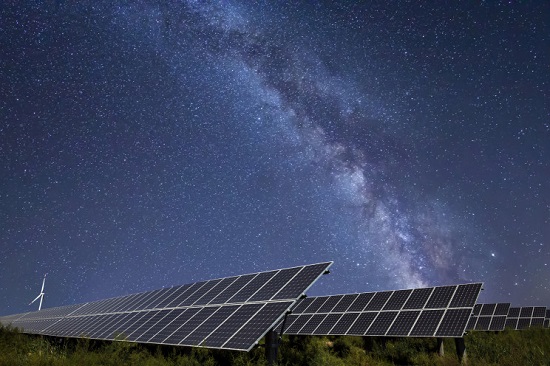 Sunday, May 5, 2024
Sunday, May 5, 2024  Sunday, May 5, 2024
Sunday, May 5, 2024 
The skies above Stanford, California, were unusually clear for several nights last October.
That was good news for researcher Sid Assawaworrarit and his colleagues. Those conditions were “probably the best of the year,” he tells IE.
Assaworrarit isn’t an astronomer grateful that clouds didn’t block starlight from traveling through the atmosphere and reaching the mirror of his telescope. An electrical engineer, he welcomed the cloudless nights for an entirely different reason: a clear night means infrared light from the surface of solar panels can freely radiate out into space.
That flow of energy enables the device Assaworrarit and his colleagues created — an ordinary solar panel outfitted with a thermoelectric generator — to generate a small amount of electricity from the slight difference in temperature between the ambient air and the surface of a solar panel pointed deep into space.
The new technology takes advantage of a surprising fact about solar panels.
“During the day, there’s a light coming in from the Sun and hitting the solar cell, but during the night, something of a reverse happens,” Assawaworrarit says.
That’s because solar panels — like everything warmer than absolute zero — emit infrared radiation.
“There’s actually light going out [from the solar panel], and we use that to generate electricity at night. The photons going out into the night sky actually cool down the solar cell,” he says.
As those photons leave the skyward surface of the solar panel, they cary heat with them. That means that on a clear night — when there are no clouds to reflect infrared light back toward the Earth — the surface of a solar panel will be a few degrees cooler than the air around it. That temperature differential is what Assawaworrarit and his colleagues are taking advantage of. A device called a thermoelectric generator can capture some of the heat flowing from the warmer air to the cooler solar panel and convert it into electricity.
Keep reading on Interesting Engineering.com